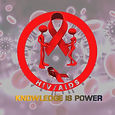Immune System Mechanism
Exploring the mechanism behind the differentiation of immune cells
Ichiro Taniuchi at the RIKEN Research Center for Allergy and Immunology, Japan, is carrying out research to understand the mysteries of organism evolution by investigating the mechanism responsible for the differentiation of T cells.
When a virus or bacterium enters the body, the foreign 'antigen' is detected and attacked by the body's immune system-a remarkable defense mechanism that has evolved on all living organisms. Immunity is mediated by helper T cells, which serve as the lynchpins in signaling and regulatory functions, and also by killer T cells, which directly attack antigen-infected cells. Ichiro Taniuchi, team leader of the Laboratory for Transcriptional Regulation at the RIKEN Research
Center for Allergy and Immunology, is carrying out research to understand the mysteries of organism evolution by investigating the mechanism behind the differentiation of these immune cells.
Roles of T cells in the immune system
All living organisms possess an immune system that senses the entry of antigens, such as viruses and bacteria, and attacks these foreign invaders. This immune response is acted out by immune cells in leukocytes, commonly known as white blood cells. Immune cells are diverse, ranging from dendritic cells to macrophages, T cells (T lymphocytes) and B cells (B lymphocytes). These cells circulate throughout the body in the blood and lymph systems, and upon detection of an antigen, act cooperatively in defense.
"Lymphocytes are the major player in the immune system in higher animals such as humans," says Taniuchi. "According to their roles, lymphocytes can be classified into B cells and T cells, and T cells can be further classified into helper T cells and killer T cells. Upon entry of pathogenic bacteria or a virus into the body, cells that sense antigens, such as dendritic cells and macrophages, first work to transmit signals about the foreign matter to helper T cells. On receiving the signal, the helper T cells issue directives to killer T cells and B cells. The killer T cells attack virus-infected or cancerous cells directly, whereas B cells release antibodies to attack pathogenic bacteria. The immune system functions are realized through the various roles of the different types of immune cells."
Th-POK, the master transcription factor for helper T cells
Although they have varied functions, all types of immune cells have their origins in hematopoietic stem cells in the bone marrow. However, while most immune cells are produced in the bone marrow, T cells are produced in the thymus, an
organ located near the heart. Migrating from the bone marrow to the thymus, T-cell progenitor cells become involved in the processes of forming diverse T-cell clones that can recognize a wide variety of antigens and distinguish the body's own cells from the invaders. Following this course of 'positive' selection, double positive (DP) thymocytes are prompted to determine their own fate and differentiate into either helper or killer T cells.
"I am working to elucidate the mechanism by which T cells determine their own fate in differentiating into helpers or killers," says Taniuchi. "To understand the mechanism behind the determination of T-cell fate and to differentiate into the two types with different roles is very important for controlling graft rejection in organ transplantation, as well as having a role in allergies, autoimmune diseases and cancerous cells. Artificially creating helper T cells and killer T cells could lead to applications for regenerative medicine and immune therapy."
The two types of T cells are easily distinguishable by the expression pattern for the glycoproteins CD4 and CD8 on the cells' surfaces. Helper T cells only express CD4, whereas killer T cells only express CD8. DP thymocytes, the undifferentiated precursor of these two cell types, express both CD4 and CD8 at the same time.
Most cells in the body contain an antigenpresenting molecule called the 'major histocompatibility complex' (MHC), which allows cells to present fragments of foreign invaders on the cell surface. When a T cell encounters an antigen-presenting MHC, the 'T- cell antigen receptor' (TCR) on the T cell's surface reacts with it and antigen information is passed from the MHC to the TCR.
This is not the full story, however: there are two types of MHCs, referred to as class I and class II. Class I MHCs are possessed by most cells, including virus-infected cells, whereas class II MHCs are possessed only by specific antigenpresenting cells. The TCR on T cells is only reactive with one of these two types of MHC, a phenomenon known as 'MHC restriction.' CD4 in helper T cells only binds to class II MHCs and aids
the reaction with the TCR, whereas CD8, only expressed in killer T cells, binds only to class I MHCs. The differentiation of T cells into killers and helpers is therefore directly coupled with this MHC restriction. "It was presumed that signaling from the TCR by MHC restriction may be involved in determining the fate of T cells as helper versus killer T cells, but the precise mechanism remains elusive," says Taniuchi.

.jpg)




